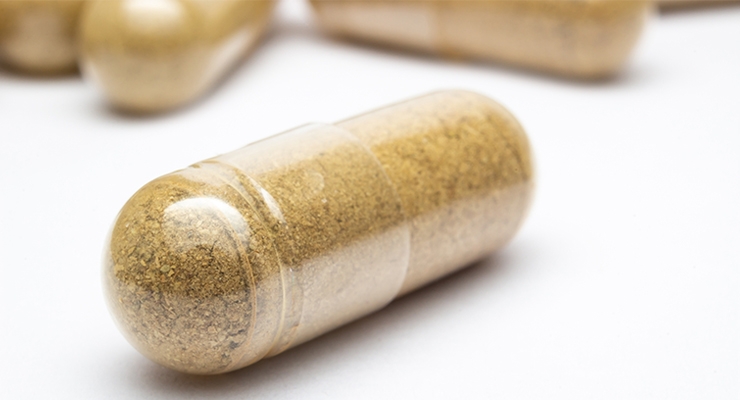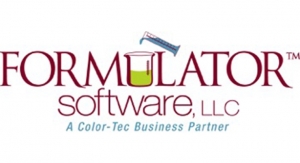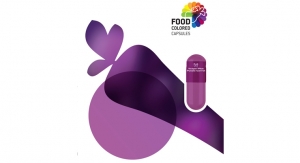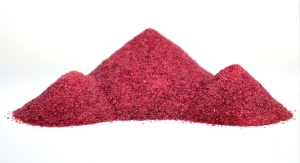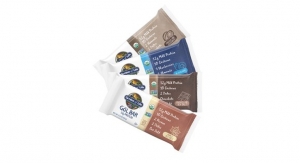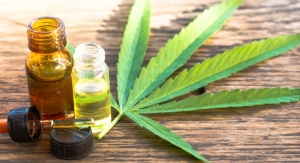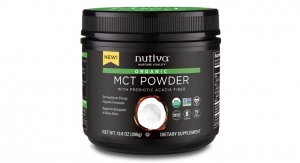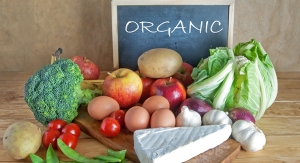By Barri Sigvertsen, Marketing Manager, & Stan Glab, Product Development Manager, Lonza Consumer Health & Nutrition11.16.18
The clean label movement is building with tsunami force. Today, 80% of consumers want to know the source of ingredients in the products they use.1 In other words, they expect transparency.
They want products to be pure, simple, and natural. Consumers expect such products to contain a limited number ingredients written in non-technical language and to have undergone minimal processing. They look for messages like “free from” genetic modification, hormones, antibiotics, pesticides, and artificial additives (i.e., colors, flavors, preservatives, sweeteners), and comes from natural and organic sustainable sources.
The tidal wave is now sweeping into the dietary supplement segment. Overall, 77% of consumers who seek clean label supplements prefer products that are from natural and organic sources—and are willing to pay a premium for them.
Supplement users also gravitate toward products with specific qualities often associated with clean label such as vegetarian (preferred by 70%), non-GMO (preferred by 70%), and preservative-free (preferred by 73%). Knowledgeable users will look for certain verification seals on products for transparency and validity, among them USDA Organic, Non-GMO Project Verified, Underwriters Laboratory, Fair Trade, and NSF.
Dosage Forms Can Meet Clean Label Criteria, Too
It is important to understand that in order for a supplement product to be considered clean label, the entire product must meet the criteria, including the dosage delivery form. A clean label delivery will offer a marketing edge.
To satisfy the robust clean-label demand, five leading supplement innovators have co-founded the Clean Label Alliance, just launched in November at SupplySide West. Its goal is to help manufacturers develop and/or transition products to clean label supplements. Bosch, Natoli, Biogrund, Lonza, and Ribus have joined forces to collectively provide support and problem-solving solutions to supplement companies regarding ingredients, formulations, manufacturing, and dosage forms.
Finding the right solution or process can pose challenges. Finding a product with a clean-label dosage form is easier said than done at this point in time. Each solution offers unique features, and resources are available to help navigate choices for speed to market.
Clean Label Challenges for Novel Delivery Systems
Thirty-two percent of consumers have been trying out splashier delivery systems for variety (e.g., a gummy product here, a nutritional bar there, a functional beverage, gels from packets, chewing gum).
With these forms, other ingredients, additives, or excipients might need to be added for the product to function and/or for stability. The additions might prevent the products from meeting clean label standards and include additional ingredients consumers would rather not take daily.
However, these alternative formats—while growing in consumer preference, especially among the youngest generations—only capture smaller portions of overall market share, ranging from 7 to 29%.
Clean Label Challenges for Traditional Forms: Tablets, Soft Gels, & Capsules
When following a routine supplement regimen, consumers across all generations largely embrace the tried-and-true dosage forms: tablets, soft gels, and capsules. Thirty-six percent prefer tablets, and 33% prefer soft gels. Capsules remain the top-choice delivery form preference among supplements users at 41%. The established formats offer simplicity, convenience, ease of swallowability, and cleanliness. Supplement users can consume a soft gel, tablet, or capsule quickly, instead of packing up a drink, bar, or gel pack for consumption.
Advancements have been made for tablets, soft gels, and capsules to achieve clean labels. Companies are working to eliminate animal-based and synthetic excipients, and new alternatives are available to meet consumer demands for more natural offerings. However, the transitions to these new solutions can have an impact on manufacturing efficiencies.
Challenges for Tablets
Generally, only 25% of a tablet is comprised of the actual active ingredient. The rest of the tablet has traditionally included additives that help bind ingredients and other ingredients that help the tablet disintegrate.2 Tablet companies are currently producing clean label excipient options. Nevertheless, the compression and heat involved to form the tablet can still degrade the nutrient. It is also possible that even less of the active will be absorbed if the tablet fails to dissolve completely, resulting in what some scientists and nutritionists have quipped “a bedpan
bullet.”3
Challenges for Soft Gels
Unlike tablets, soft gels can deliver liquids for a more bioavailable experience and improved nutrient absorption. The soft gel outer ribbon can be made of vegetarian polymers for a clean label appeal, but the performance can be challenging with certain ingredients and make it difficult to manufacture. Some contain plasticizers in the soft gel that can create micro-channels which allow oxygen permeation that would cause odors to seep out. To mask the odors, fragrances or flavors might be added and potentially compromise cleanliness.
Capsules Deliver on the Clean Label Promise
Hard capsules come in fish, bovine, and porcine gelatin as well as vegetarian polymers—all without plasticizers. They can be free of excipients, binders, fillers, and disintegrants. They are also “free from” allergens, preservatives, artificial colors, lactose, and gluten. In addition, they can be available with a variety of third-party certifications like Non-GMO Project Verified.
From a manufacturing perspective, the capsule also offers a way to reduce the number of components required to create the finished product, especially during filling of the capsule. Manufacturers are now providing clean label options for fill and lubrication.
In other words, less is more—especially for the healthy lifestyle consumer.
Vegetarian capsules can offer the greatest opportunity to address the clean label consumer’s values. To support the certification process and clean label claims for the final supplement product, look for vegetarian capsule suppliers that can provide certifications from Vegan Action, Vegetarian Society, Non-GMO Project Verified, Halal, and Kosher. Savvy healthy lifestyle consumers will be sure to scour the packaging for the certification labels that will vouch for authenticity and quality.
Within the vegetarian capsule universe, there are some creative technologies that meet clean label standards while also promoting compliance through greater palatability and enhancing effectiveness of an ingredient through better absorption, targeted delivery, and protection of nutrient integrity.
A leading vegetarian capsule is ideal for moisture-sensitive ingredients and dry herbal products. Made only of HPMC and water and without gelling systems and additives, it dissolves quickly—100% in 30 minutes or less4—making it suitable for delivery of amino acids and hygroscopic ingredients. When hermetically sealed with the proprietary LEMS technology, this vegetarian capsule can be used to deliver liquids that are sensitive to oxidation degradation like nutritional oils.
Another HPMC capsule offers targeted, modified release to the upper intestinal tract without the use of enteric coatings often applied to tablets, capsules, pellets, and granules filled in capsule shells. This vegetarian capsule has unique, inherent acid-resistant polymer properties so the capsule resists disintegration in the stomach but opens immediately once the pH rises above 6.8—out of the acidic environment of the stomach. This capsule is well suited for delivery of probiotics, enzymes, and amino acids—all of which are sensitive to acid and work better in the intestines. The modified-release characteristic is good for ingredients that can irritate the stomach (such as iron) or cause burp-back (such as garlic).
A vegetarian pullulan capsule naturally fermented from tapioca is available for “Made with Organic Ingredients” listing on the label. Without the use of additives, it offers the highest odor barrier properties of all polymers—better than gelatin or HPMC—making it a more natural alternative for “stinky” ingredients. It also provides excellent oxygen protection for liquid ingredients prone to oxidation like fish oils or ubiquinol. With a moisture content similar to gelatin, it can be used to encapsulate powders such as vitamin C because it withstands the Maillard reaction.
To ensure that any capsule itself is manufactured to the highest standards of purity, traceability, and integrity of raw materials, seek out a capsule manufacturer that has a supplier selection qualification program designed to certify that the capsules are free of contaminants and are made of the materials as labeled. In addition, ask for studies about the critical quality attributes of capsule batches to understand the variability and impact on the desired quality and performance of the final dosage form.
Conclusion
There’s no stopping the clean label tidal wave. This once-niche movement has infiltrated the mainstream. To stay afloat, and thrive, supplement manufacturers must offer products that are considered clean label inside and outside—ingredients and formulations, but also dosage delivery forms. Capsules are the strongest ship to board.
References
1. National Marketing Institute’s 2018 Supplements/OTC/Rx Database (SORD) report. All subsequent statistics and assertions come from the SORD study, unless otherwise noted.
2. Presentation by Hassan Benameur, PhD, Director of Liquids Development, Capsugel (prior to Lonza acquisition), Colmar, France, at Capsugel’s Liquids Supplement Summit, Oct. 12-14, 2005, in Greenwood, SC.
3. Presentation by Alan R. Butcher, PhD, Director of Operations, Thorne Research, at Capsugel’s Liquids Supplement Summit, Oct. 12-14, 2005, in Greenwood, S.C.
4. Cade, Dominique, “Vcaps Plus Capsules: A New HPMC Capsule for Optimum Formulation of Pharmaceutical Dosage Forms,” White Paper from Capsugel (prior to Lonza acquisition), 2010, pp. 4-5.
Following the closing of the Capsugel acquisition, Lonza further strengthened its position as one of the world’s leading and most-trusted suppliers to the pharmaceutical, biotech and specialty ingredients markets. Lonza harnesses science and technology to create products that support safer and healthier living and that enhance the overall quality of life. Lonza Consumer Health & Nutrition combines expertise in high-quality, science-backed ingredients with formulation know-how and industry-leading dosage form technologies to create innovative solutions for consumer health and nutrition companies.
They want products to be pure, simple, and natural. Consumers expect such products to contain a limited number ingredients written in non-technical language and to have undergone minimal processing. They look for messages like “free from” genetic modification, hormones, antibiotics, pesticides, and artificial additives (i.e., colors, flavors, preservatives, sweeteners), and comes from natural and organic sustainable sources.
The tidal wave is now sweeping into the dietary supplement segment. Overall, 77% of consumers who seek clean label supplements prefer products that are from natural and organic sources—and are willing to pay a premium for them.
Supplement users also gravitate toward products with specific qualities often associated with clean label such as vegetarian (preferred by 70%), non-GMO (preferred by 70%), and preservative-free (preferred by 73%). Knowledgeable users will look for certain verification seals on products for transparency and validity, among them USDA Organic, Non-GMO Project Verified, Underwriters Laboratory, Fair Trade, and NSF.
Dosage Forms Can Meet Clean Label Criteria, Too
It is important to understand that in order for a supplement product to be considered clean label, the entire product must meet the criteria, including the dosage delivery form. A clean label delivery will offer a marketing edge.
To satisfy the robust clean-label demand, five leading supplement innovators have co-founded the Clean Label Alliance, just launched in November at SupplySide West. Its goal is to help manufacturers develop and/or transition products to clean label supplements. Bosch, Natoli, Biogrund, Lonza, and Ribus have joined forces to collectively provide support and problem-solving solutions to supplement companies regarding ingredients, formulations, manufacturing, and dosage forms.
Finding the right solution or process can pose challenges. Finding a product with a clean-label dosage form is easier said than done at this point in time. Each solution offers unique features, and resources are available to help navigate choices for speed to market.
Clean Label Challenges for Novel Delivery Systems
Thirty-two percent of consumers have been trying out splashier delivery systems for variety (e.g., a gummy product here, a nutritional bar there, a functional beverage, gels from packets, chewing gum).
With these forms, other ingredients, additives, or excipients might need to be added for the product to function and/or for stability. The additions might prevent the products from meeting clean label standards and include additional ingredients consumers would rather not take daily.
However, these alternative formats—while growing in consumer preference, especially among the youngest generations—only capture smaller portions of overall market share, ranging from 7 to 29%.
Clean Label Challenges for Traditional Forms: Tablets, Soft Gels, & Capsules
When following a routine supplement regimen, consumers across all generations largely embrace the tried-and-true dosage forms: tablets, soft gels, and capsules. Thirty-six percent prefer tablets, and 33% prefer soft gels. Capsules remain the top-choice delivery form preference among supplements users at 41%. The established formats offer simplicity, convenience, ease of swallowability, and cleanliness. Supplement users can consume a soft gel, tablet, or capsule quickly, instead of packing up a drink, bar, or gel pack for consumption.
Advancements have been made for tablets, soft gels, and capsules to achieve clean labels. Companies are working to eliminate animal-based and synthetic excipients, and new alternatives are available to meet consumer demands for more natural offerings. However, the transitions to these new solutions can have an impact on manufacturing efficiencies.
Challenges for Tablets
Generally, only 25% of a tablet is comprised of the actual active ingredient. The rest of the tablet has traditionally included additives that help bind ingredients and other ingredients that help the tablet disintegrate.2 Tablet companies are currently producing clean label excipient options. Nevertheless, the compression and heat involved to form the tablet can still degrade the nutrient. It is also possible that even less of the active will be absorbed if the tablet fails to dissolve completely, resulting in what some scientists and nutritionists have quipped “a bedpan
bullet.”3
Challenges for Soft Gels
Unlike tablets, soft gels can deliver liquids for a more bioavailable experience and improved nutrient absorption. The soft gel outer ribbon can be made of vegetarian polymers for a clean label appeal, but the performance can be challenging with certain ingredients and make it difficult to manufacture. Some contain plasticizers in the soft gel that can create micro-channels which allow oxygen permeation that would cause odors to seep out. To mask the odors, fragrances or flavors might be added and potentially compromise cleanliness.
Capsules Deliver on the Clean Label Promise
Hard capsules come in fish, bovine, and porcine gelatin as well as vegetarian polymers—all without plasticizers. They can be free of excipients, binders, fillers, and disintegrants. They are also “free from” allergens, preservatives, artificial colors, lactose, and gluten. In addition, they can be available with a variety of third-party certifications like Non-GMO Project Verified.
From a manufacturing perspective, the capsule also offers a way to reduce the number of components required to create the finished product, especially during filling of the capsule. Manufacturers are now providing clean label options for fill and lubrication.
In other words, less is more—especially for the healthy lifestyle consumer.
Vegetarian capsules can offer the greatest opportunity to address the clean label consumer’s values. To support the certification process and clean label claims for the final supplement product, look for vegetarian capsule suppliers that can provide certifications from Vegan Action, Vegetarian Society, Non-GMO Project Verified, Halal, and Kosher. Savvy healthy lifestyle consumers will be sure to scour the packaging for the certification labels that will vouch for authenticity and quality.
Within the vegetarian capsule universe, there are some creative technologies that meet clean label standards while also promoting compliance through greater palatability and enhancing effectiveness of an ingredient through better absorption, targeted delivery, and protection of nutrient integrity.
A leading vegetarian capsule is ideal for moisture-sensitive ingredients and dry herbal products. Made only of HPMC and water and without gelling systems and additives, it dissolves quickly—100% in 30 minutes or less4—making it suitable for delivery of amino acids and hygroscopic ingredients. When hermetically sealed with the proprietary LEMS technology, this vegetarian capsule can be used to deliver liquids that are sensitive to oxidation degradation like nutritional oils.
Another HPMC capsule offers targeted, modified release to the upper intestinal tract without the use of enteric coatings often applied to tablets, capsules, pellets, and granules filled in capsule shells. This vegetarian capsule has unique, inherent acid-resistant polymer properties so the capsule resists disintegration in the stomach but opens immediately once the pH rises above 6.8—out of the acidic environment of the stomach. This capsule is well suited for delivery of probiotics, enzymes, and amino acids—all of which are sensitive to acid and work better in the intestines. The modified-release characteristic is good for ingredients that can irritate the stomach (such as iron) or cause burp-back (such as garlic).
A vegetarian pullulan capsule naturally fermented from tapioca is available for “Made with Organic Ingredients” listing on the label. Without the use of additives, it offers the highest odor barrier properties of all polymers—better than gelatin or HPMC—making it a more natural alternative for “stinky” ingredients. It also provides excellent oxygen protection for liquid ingredients prone to oxidation like fish oils or ubiquinol. With a moisture content similar to gelatin, it can be used to encapsulate powders such as vitamin C because it withstands the Maillard reaction.
To ensure that any capsule itself is manufactured to the highest standards of purity, traceability, and integrity of raw materials, seek out a capsule manufacturer that has a supplier selection qualification program designed to certify that the capsules are free of contaminants and are made of the materials as labeled. In addition, ask for studies about the critical quality attributes of capsule batches to understand the variability and impact on the desired quality and performance of the final dosage form.
Conclusion
There’s no stopping the clean label tidal wave. This once-niche movement has infiltrated the mainstream. To stay afloat, and thrive, supplement manufacturers must offer products that are considered clean label inside and outside—ingredients and formulations, but also dosage delivery forms. Capsules are the strongest ship to board.
References
1. National Marketing Institute’s 2018 Supplements/OTC/Rx Database (SORD) report. All subsequent statistics and assertions come from the SORD study, unless otherwise noted.
2. Presentation by Hassan Benameur, PhD, Director of Liquids Development, Capsugel (prior to Lonza acquisition), Colmar, France, at Capsugel’s Liquids Supplement Summit, Oct. 12-14, 2005, in Greenwood, SC.
3. Presentation by Alan R. Butcher, PhD, Director of Operations, Thorne Research, at Capsugel’s Liquids Supplement Summit, Oct. 12-14, 2005, in Greenwood, S.C.
4. Cade, Dominique, “Vcaps Plus Capsules: A New HPMC Capsule for Optimum Formulation of Pharmaceutical Dosage Forms,” White Paper from Capsugel (prior to Lonza acquisition), 2010, pp. 4-5.
Following the closing of the Capsugel acquisition, Lonza further strengthened its position as one of the world’s leading and most-trusted suppliers to the pharmaceutical, biotech and specialty ingredients markets. Lonza harnesses science and technology to create products that support safer and healthier living and that enhance the overall quality of life. Lonza Consumer Health & Nutrition combines expertise in high-quality, science-backed ingredients with formulation know-how and industry-leading dosage form technologies to create innovative solutions for consumer health and nutrition companies.

